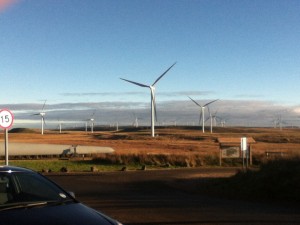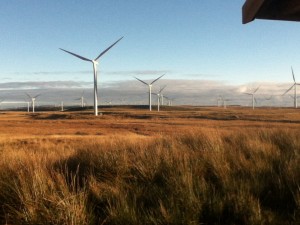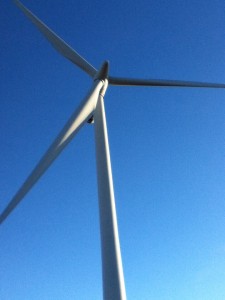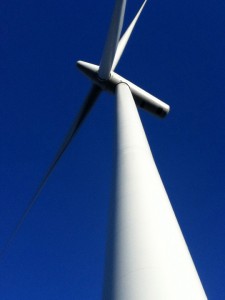I have just returned from eleven days in Scotland – one week as a Visiting Professor in the Engineering School at the University of Aberdeen and the remaining time visiting with my wife’s family in and around Glasgow.
Prior to heading to Aberdeen, shortly after arriving, I was kindly taken to see the Whitelee Wind Farm just outside Glasgow, an experience I am still savoring. A few pictures will illustrate why I was so excited by the visit – quite a change from the late 60’s and early 70’s when I first got involved with renewables:
The Whitelee is Europe’s largest onshore wind farm, built in two stages to reach its current dimensions: 215 turbines (140/2.3 MW, 69/3 MW, 6/1.67 MW) with a maximum capacity of 539 MW. Wind energy is Scotland’s fastest growing renewable energy technology, reflecting the fact that Scotland is the windiest country in Europe (25% of all of Europe’s wind crosses the Scottish landmass and its surrounding seas). Scotland’s wind energy potential is estimated to be more than 150 GW onshore (current peak demand in Scotland is 10.5 GW) with significant opportunities for additional onshore and offshore development. Scotland’s offshore potential is estimated to be 206 GW and offshore wind power generation is predicted to be about 10 GW in 2020. As result, the Scottish government has set a target of generating 100% of Scotland’s electricity from renewable energy by 2020, with most of this likely to come from wind power. Scotland is also a world leader in development of wave and tidal power.
A few interesting facts about Scotland’s wind power resource:
– Scotland’s first offshore wind turbine was placed at the Beatrice Wind Farm in the North Sea in 2006 and was the world’s large wind turbine at the time – 5 MW. A second identical turbine was also installed and the wind farm began delivering electricity in 2007. Based on historical wind speed measurements it is expected that these turbines will run 96% of the time (more than 8400 hours per year) and at full power (10 MW) 38% of the time.
– based on averages a wind turbine in an EU country will operate at a 25% capacity factor. In Scotland, given the consistency of wind, it is expected that an average Scottish turbine will have a capacity factor of 35% or more. In fact, a small community wind farm in Shetland set a world record in 2005, achieving a capacity factor of 57.9%.
– About half of the UK’s current installed wind capacity is in Scotland.
This is all happening in the context of a vote next September in Scotland as to whether Scotland will separate from the UK and go out on its own as an independent nation. This is a complicated issue that is receiving extensive coverage in Scotland and the other parts of Great Britain, as well as elsewhere, and may be a nail biter until the vote is taken. An interesting fact is that Scotland is already an independent nation legally – the treaty that bound Scotland to England et al combined their parliaments but did not remove Scotland’s legal separateness. It will be an interesting debate for the next nine months.




